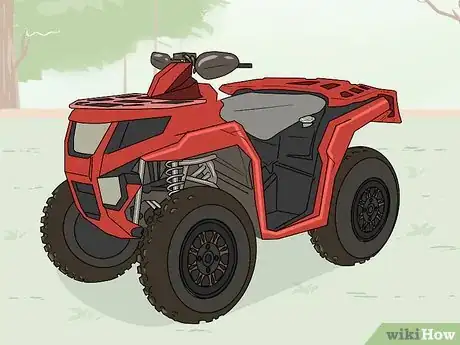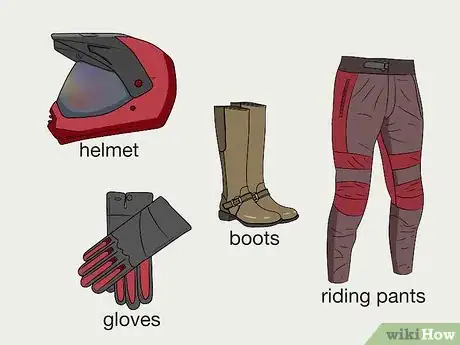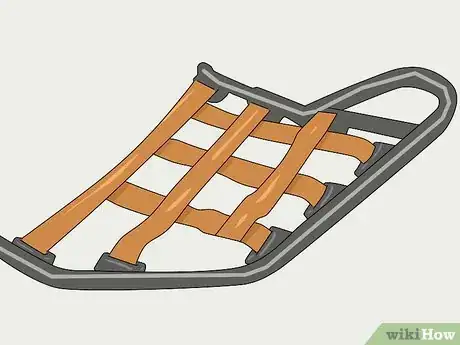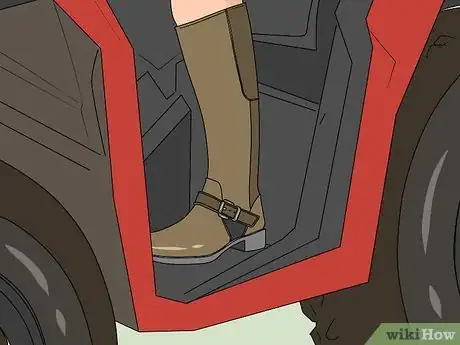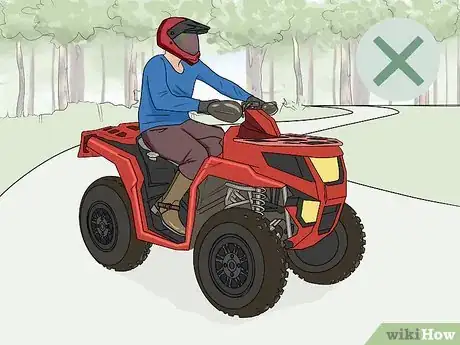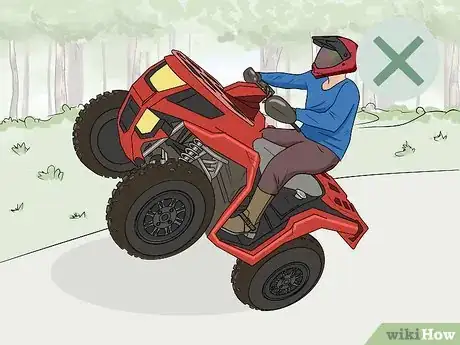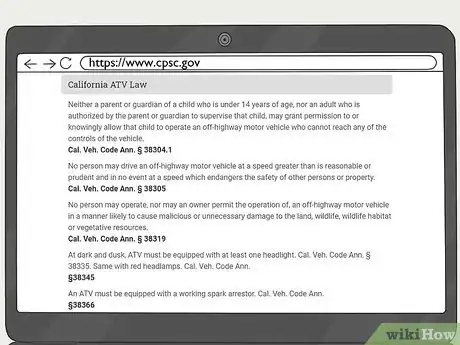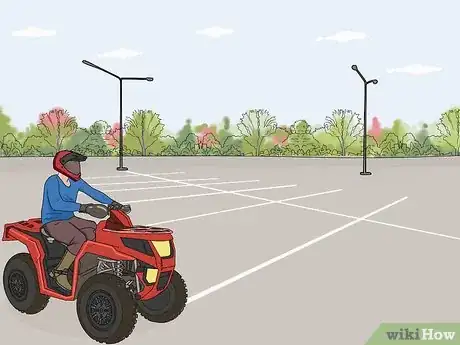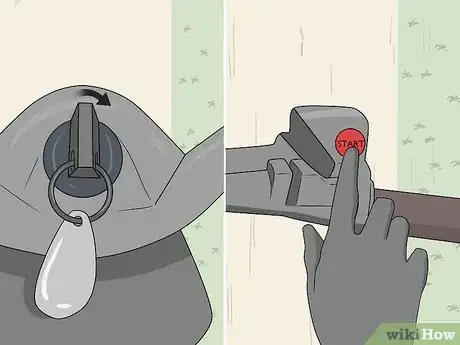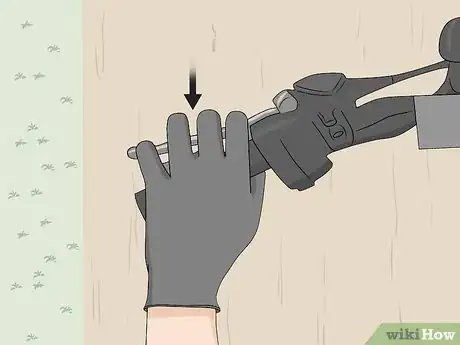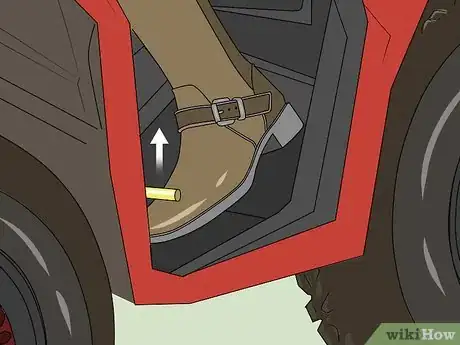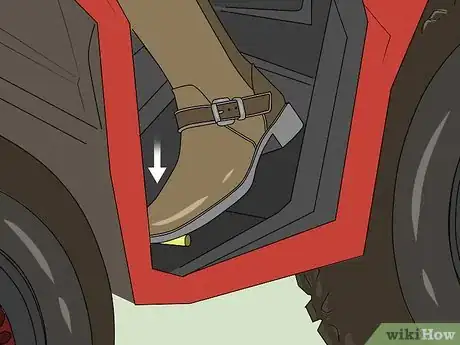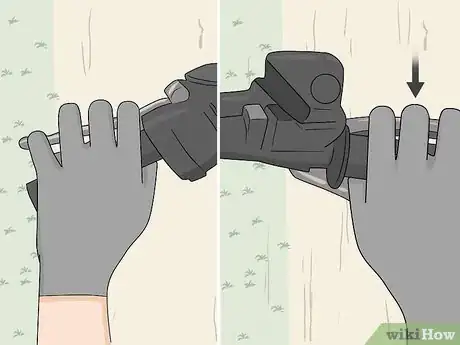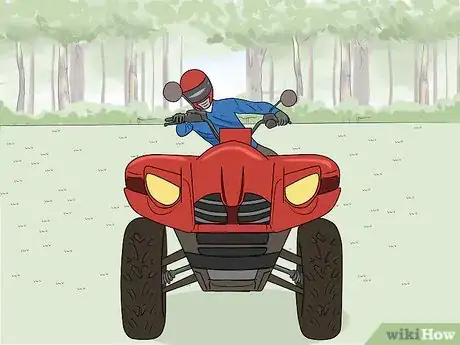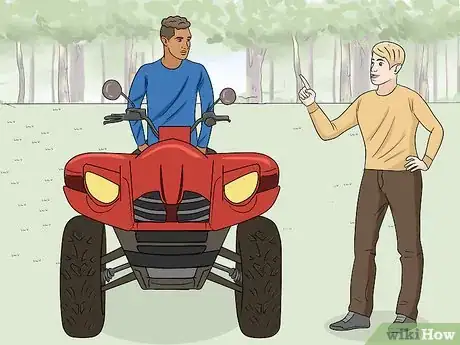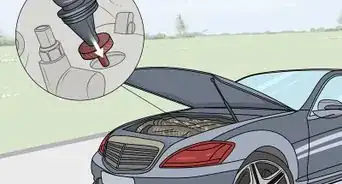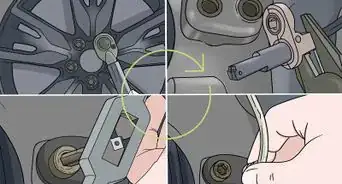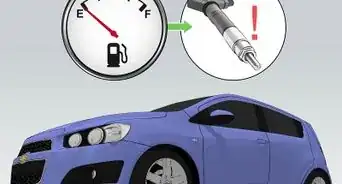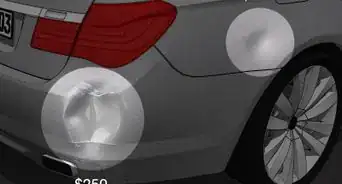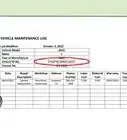This article was co-authored by wikiHow Staff. Our trained team of editors and researchers validate articles for accuracy and comprehensiveness. wikiHow's Content Management Team carefully monitors the work from our editorial staff to ensure that each article is backed by trusted research and meets our high quality standards.
wikiHow marks an article as reader-approved once it receives enough positive feedback. In this case, 88% of readers who voted found the article helpful, earning it our reader-approved status.
This article has been viewed 182,105 times.
Learn more...
Riding an all-terrain vehicle, or ATV, can be a fun and exciting way to explore the great outdoors. But, ATVs are powerful machines, and you need to know how to safely and properly ride one before you start blazing down an offroad trail. Be sure to have the proper safety equipment, choose an appropriate ATV to ride, and don’t try any tricks when you’re starting out. While you’re learning to ride, choose a wide-open space so you can practice picking up speed, shifting gears, and taking turns properly. For the best preparation, take a formal ATV riding course.
Steps
Riding an ATV Safely
-
1Choose an appropriate ATV for you to start riding. A sports quad is a good starter ATV for an adult who can reach the handlebars and gear shift in the footrest. A youth ATV is more appropriate for a younger person getting started because they’re lighter and shorter. You could also choose a utility ATV if you plan to use it for work purposes and you need to learn how to ride it.
- Try sitting on an ATV to make sure it feels comfortable and you can reach all of the handles and gears.
- Using an ATV that is too large, powerful, or unwieldy for you could result in an accident.
-
2Wear protective gear when you ride. ATVs are powerful machines and can cause you serious injury if you’re in an accident. To better protect yourself, wear proper equipment. Before you ride, put on a pair of boots, gloves, safety goggles, and a helmet.
- Wearing protective gear will reduce your chances of getting injured, especially if you’re new to riding.
- Make sure the helmet and gear fit properly and allow you to see properly.
- You can find ATV protective gear at ATV supply shops, at sports and outdoor stores, and online.
Advertisement -
3Use nerf bars when you’re learning to ride. Nerf bars are large foot pegs that fit onto your ATV to widen the footing area, which makes it easier for you to keep your footing, especially when you’re starting out. When you choose your ATV, go with one that has nerf bars or have them installed so you can learn to ride more safely.[1]
- You can find nerf bars at sports and outdoor stores, at ATV supply stores, and online.
- Nerf bars also make it easier for you to learn how to turn, use the clutch, and shift gears.
-
4Keep both feet on the foot pegs at all times. Your feet need to always be placed in the footing area of the ATV to ensure your safety. The footing area is where the clutch and the gear shift is located, so it’s important that you’re ready to shift gears if necessary. You could also get your foot or leg snagged on something when you’re riding if any part of your body is hanging out of the ATV.[2]
- Hanging a leg outside of your ATV can also shift your weight off-balance, which can cause the ATV to tip or you to fall off.
-
5Avoid riding on paved roads to avoid getting hit by a vehicle. ATVs are meant to be ridden offroad, so driving them on a paved street or highway is actually bad for their tires. You could also accidentally be hit by a passing vehicle. Only ride on paved roads when you’re crossing them to get to the other side.[3]
- It’s also against the law in many places to drive an ATV on a paved road.
-
6Don’t attempt any wheelies when you start riding an ATV. A wheelie involves leaning your weight back to lift the front wheels off of the ground, and they can easily result in the ATV flipping over onto you. When you’re starting to ride, don’t be tempted to try a trick that can result in serious injury.[4]
Warning: The weight of an ATV landing on you can result in broken bones, paralysis, and even death.
Learning How to Ride
-
1Check your local laws regarding ATVs before you ride. Some locations may have designated areas for you to legally drive your ATV. You may also need to have a special license and proof of insurance in order to ride an ATV. Look online for your area’s rules and regulations about ATV riding.
- Check your local government’s website for a list of rules regarding ATVs.
-
2Ride in an open area without any obstacles when you’re getting started. Choose a large, flat, open space that’s free of any hazards or obstacles that you could run into to practice riding your ATV. The controls will take some getting used to, so avoid steep terrain or an area that has a lot of vehicles or objects that you would need to navigate around.[5]
- An empty field or a large backyard would work as a suitable practice area.
-
3Turn the key and press the start button to start the ATV. Put the key into the ignition and turn it to the start position. Then, press the start button, which is usually located on the right side of the handlebars. When the engine starts, allow it to run for about a minute so it can warm up.
- If you’re riding in cold weather conditions, allow the engine to run for 5 minutes so it can heat up before you ride.
-
4Pull the clutch handle to place the engine into neutral. On the left handlebar is a lever called the clutch. Pulling the clutch puts the engine into the neutral gear, which allows you to shift gears as you build up speed. To start moving, engage the clutch with your left hand so you can put the engine into gear.[6]
- While you’re in the neutral gear, your ATV can continue to roll forward, but you will not be able to add any speed.
- You need to place the engine into first gear in order to start moving.
-
5Use your left foot to raise the gear shift lever to shift into higher gears. With the clutch engaged, use your left foot to shift gears by lifting the lever located in the left footrest. Then, release the clutch to place the engine into gear so you can keep moving. As you build up speed, shift into higher gears.[7]
- Practice riding around, then slowly increase your speed, and work to shift into higher gears to get used to riding.
Heads Up: If your ATV has an automatic transmission, then you don’t need to worry about shifting gears. Just work to gradually increase your speed to get more comfortable riding!
-
6Downshift into lower gears as you slow down your ATV. When you’re decreasing your speed, you also need to shift back into lower gears. Hold the clutch with your left hand and press down on the gear shift lever with your left foot, then release the clutch. You’ll feel the lever click down as you downshift.[8]
- Shift into lower gears one at a time to allow your engine to adjust to the lower speeds and gears.
-
7Start braking with your right hand and gradually add your left hand. The brakes of an ATV are controlled by levers to the right and left of the handlebars. The lever to the right controls the rear brakes, while the lever to the left controls the front brakes. Always start braking the rear wheels first by squeezing the right handle, and add additional braking power by slowly squeezing the left handle.[9]
- If you squeeze both brakes at the same time, you may tumble forward over the handlebars.
- Squeezing the left handle to brake the front wheels only can cause the ATV to flip over.
-
8Lean into turns to keep the ATV from tipping. Shift your weight in the direction that you’re turning to distribute the weight and keep your ATV from tipping over. If you’re turning left, lean to the left side of the ATV. If you’re turning right, lean right. Work to get used to distributing your weight so you can take turns at higher speeds.[10]
- It can help to stand up from the seat so you can lean further if you’re taking a harder turn.
-
9Take an ATV riding course to receive formal training. The best way to make sure you’re properly equipped to start riding your ATV is to take a course from an experienced rider who can show you the ins and outs of your ATV. Look online for classes in your area that you can sign up for to receive formal instruction.[11]
- Ask your ATV dealer if they provide instruction or can recommend a course.
- You may be required to take a certification course in order to be legally allowed to ride your ATV.
Community Q&A
-
QuestionAre manual ATVs easy to drive for beginners?
 Community AnswerOnly if you are familiar with the clutch and don't stall when trying. It may take some practice. An automatic ATV would be easier.
Community AnswerOnly if you are familiar with the clutch and don't stall when trying. It may take some practice. An automatic ATV would be easier. -
QuestionHow can I start an ATV in gear?
 Community AnswerYou would have to have a manual quad to start it in gear, because that would ruin the gears on an automatic.
Community AnswerYou would have to have a manual quad to start it in gear, because that would ruin the gears on an automatic. -
QuestionMy new Yamaha ATV starts, but keeps cutting out. It feels like the carburetor is blocked. How do I fix it?
 Community AnswerIf it is brand new, it is likely that the float on the carburetor is jammed. Try putting some sea foam fuel additive. It's just stiff and needs to be worn in!
Community AnswerIf it is brand new, it is likely that the float on the carburetor is jammed. Try putting some sea foam fuel additive. It's just stiff and needs to be worn in!
Warnings
- Always wear protective gear when you’re riding an ATV!⧼thumbs_response⧽
References
- ↑ https://mentalitch.com/riding-an-atv-is-easy-6-tips-for-any-beginner/
- ↑ https://atvsafety.org/wp-content/uploads/2018/03/ASI-ATV-Tips-Guide-2018.pdf
- ↑ https://kidshealth.org/en/parents/atv-safety.html
- ↑ https://kidshealth.org/en/parents/atv-safety.html
- ↑ https://atvsafety.org/wp-content/uploads/2018/03/ASI-ATV-Tips-Guide-2018.pdf
- ↑ http://offroadfreedom.com/how-to-drive-a-manual-atv/
- ↑ http://offroadfreedom.com/how-to-drive-a-manual-atv/
- ↑ http://offroadfreedom.com/how-to-drive-a-manual-atv/
- ↑ https://atvsafety.org/wp-content/uploads/2018/03/ASI-ATV-Tips-Guide-2018.pdf
About This Article
If you want to start riding an ATV, it’s important to take safety precautions and take things slowly so you don’t injure yourself. Even when riding off road, you’ll need to wear boots, gloves, safety goggles, and a helmet to protect yourself in case you fall off. Stick to open, off-road areas while you’re learning to ride. You should also check the laws around riding ATVs in your area, since you might need a license and insurance. Consider taking a riding course to learn the basics from a professional. You’ll start by practicing starting and stopping. Then you can build your confidence riding at higher speeds and taking turns. If you’re riding a manual transmission, you’ll need to learn how to shift gears safely. For more tips, including how to choose an appropriate first ATV, read on!
